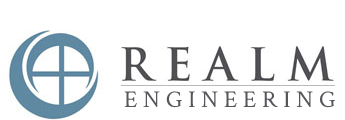The concept of hydroseeding is becoming more and more popular every day
You may already know this, but it’s important to understand the difference between hydromulching, hydroseeding, and hydraulic seeding. It’s not uncommon to hear these terms used interchangeably, even though they refer to completely different techniques. Hydromulching involves applying a slurry of water, a mulch product (usually made from wood fiber), and often a tackifier, to problematic areas in an effort to prevent soil erosion. Hydroseeding is much the same as hydromulching, except that a seed mix and fertilizer are added to the hydromulch slurry. Hydraulic seeding sounds similar to hydroseeding, except that the seeds are applied without the mulch product, tackifier, or fertilizer. Since there is nothing holding the soil in place until the seeds germinate, hydraulic seeding is not considered an effective erosion control measure until the plants reach maturity. So, you’re writing a SWPPP, and you come across a perfect scenario for hydroseeding. Well, now what? Which seed mix should you specify? Should the mixture be applied with mulch and fertilizer, or not? Let’s start with the first question. The choice of seed (or seed mix) depends on quite a few factors. First, it’s important to determine the climate and soil type of the project location. California is a very diverse state – within a few hours, you can drive to the rugged Sierra Nevada's, the fertile Central Valley, the beaches of Southern California, or the wastelands of the Mojave Desert. Plants that thrive in the humid San Diego climate will not last long in the Lake Tahoe area (nor would you want San Diego plants in Tahoe – but more on that later). You will also want to consider the slope of the area to be hydroseeded. Not all plants grow well on a slope, and depending on how steep the slope is, the hydroseeding may fail without some form of reinforcement. Will the area be irrigated? Many seed mixes are designed with construction and erosion control in mind, and usually require little (if any) irrigation. If the application area can handle it, irrigation will often extend the growth time of the plants for a longer green period. Another important consideration is the desired longevity of the hydroseeding, and whether you need the plants to reseed themselves. Some seed mixes are better at reseeding than others, and many times irrigation is recommended to help get a satisfactory reseeding. Probably one of the most important questions to consider when choosing a seed mix is whether native or non-native plants should be used. Native landscaping is becoming very popular in California, and native plants would likely be preferable in many cases, especially if the longevity of the hydroseeding application is longer than a month or two. In some sensitive areas, native species may be required for hydroseeding applications.
But, here’s one last consideration before you specify a seed mix. Say you’ve found suitable erosion control seed mixes from two separate suppliers. One supplier is charging $2.95 per pound, while the other is charging $6.00 per pound. Most people would choose the $2.95 product, assuming that it’s the better deal. Or is it? You may be saving a little money by going with the cheaper product, but you might also be sacrificing quality. The seed industry uses a term called “Pure Live Seed,” – this is the percentage of the seeding mix that is actually viable seed, versus the percentage of the mix that is essentially of no value. A higher PLS percentage means a higher rate of germination, and consequently requires less bulk seed. For instance: the first supplier may be selling seed that is only 45% PLS and requires an application rate of 60 lbs. per acre, while the more expensive supplier may be selling seed in the 80% PLS range which only needs to be applied at 40 lbs. per acre. So even though you may be paying more per pound for seed from the second supplier, you won’t have to buy as many pounds of seed, which may end up saving you money. So, when specifying hydroseed in a SWPPP, you are going to have to do your homework. It’s always a good idea to talk to your preferred hydroseeding contractor or seed supplier (or if you don’t have any, check out the list below), and follow their recommendations. Hydroseeding is a great technique for preventing and controlling erosion, but it is also a little on the expensive side. If you’re planning on specifying this BMP in a SWPPP, make sure you do your research and specify the right product and application rate. Even though it may be expensive, it sure costs less than having to redo it because the plants didn’t take. Your client’s pocketbook will thank you.

Post imported by Google+Blog for WordPress.

Leave a Reply
You must be logged in to post a comment.